Heavy rainfall in Bihar and its upstream Himalayan nation Nepal has led to flash floods in parts of north Bihar causing mayhem in villages along the India-Nepal border. Pashchim Champaran, Purvi Champaran, Gopalganj and Saran districts in north Bihar are on a flood alert.
An alert has also been issued for the Gandak river, a tributary of the Ganges, which flows down from Nepal and enters Bihar’s Pashchim Champaran district. The Himalayan river is already swollen with floodwaters.
The flood situation in north Bihar is likely to worsen as the India Meteorological Department (IMD) has issued an alert for heavy to very heavy rainfall in the region in the next two to three days, which is likely to worsen the flood situation.
A cyclonic circulation lies over Gangetic West Bengal & neighbourhood. Under its influence, widespread rainfall with isolated heavy to very heavy falls very likely over Bihar, Jharkhand, West Bengal & Sikkim and north Odisha during next 2-3 days.
— India Meteorological Department (@Indiametdept) June 17, 2021
Water sector experts working in the region inform that floods have hit the state early this year. “Normally flood cycles start in July. Floods are early this year,” Eklavya Prasad, managing trustee of Megh Pyne Abhiyan, told Gaon Connection. For the past over 15 years, his public charitable trust has been working on water and sanitation issues in the eastern part of the country, including the north Bihar region.
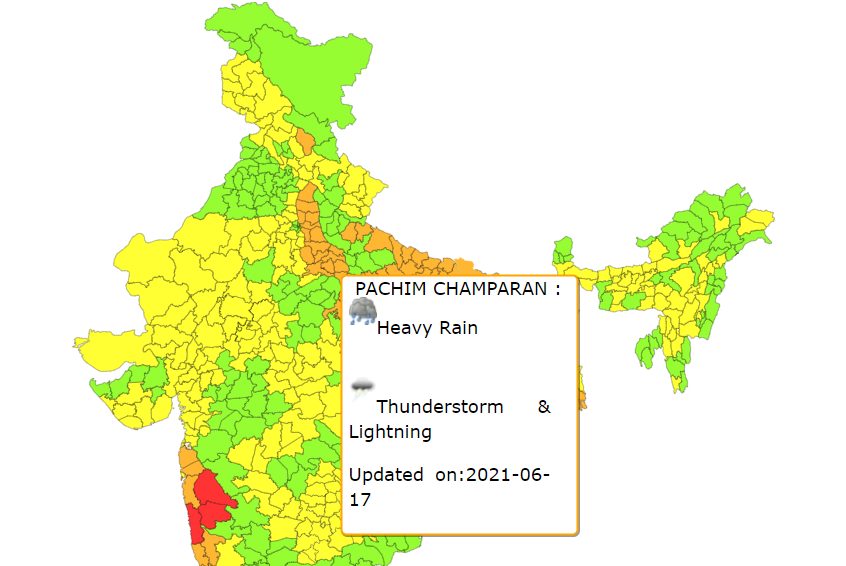
In the wee hours of June 14 and June 15, villagers in Paschim Champaran district of Bihar woke up with a start as flash flood waters entered their villages inundating homes. Masan river, a transboundary river and a tributary of Gandak, was in full spate. Some villages had waist level flood water flowing with strong current. It washed away kutcha houses made of mud and thatched roofs. For hours, villagers were trapped in flood water in the dead of the night as women and children cried for help.
“Masan’s water came inside the village and inundated several houses. At least fifteen houses have suffered complete damage. People have lost anaj (food grains) and belongings,” Ujjawal Kumar, one of the flood affected villagers from Inarbarwa village of Ramnagar in West Champaran, told Gaon Connection. According to him, the neighbouring village of Serahva was the worst affected due to the flash flood.
“This isn’t the first flood of the year. We have faced similar flash floods twice in the past three weeks. But no official has come so far,” complained Kumar. “The flood water gushes down full force from Nepal and washes away whatever comes in its way. It affects hundreds of villages and hamlets along the border,” he added.
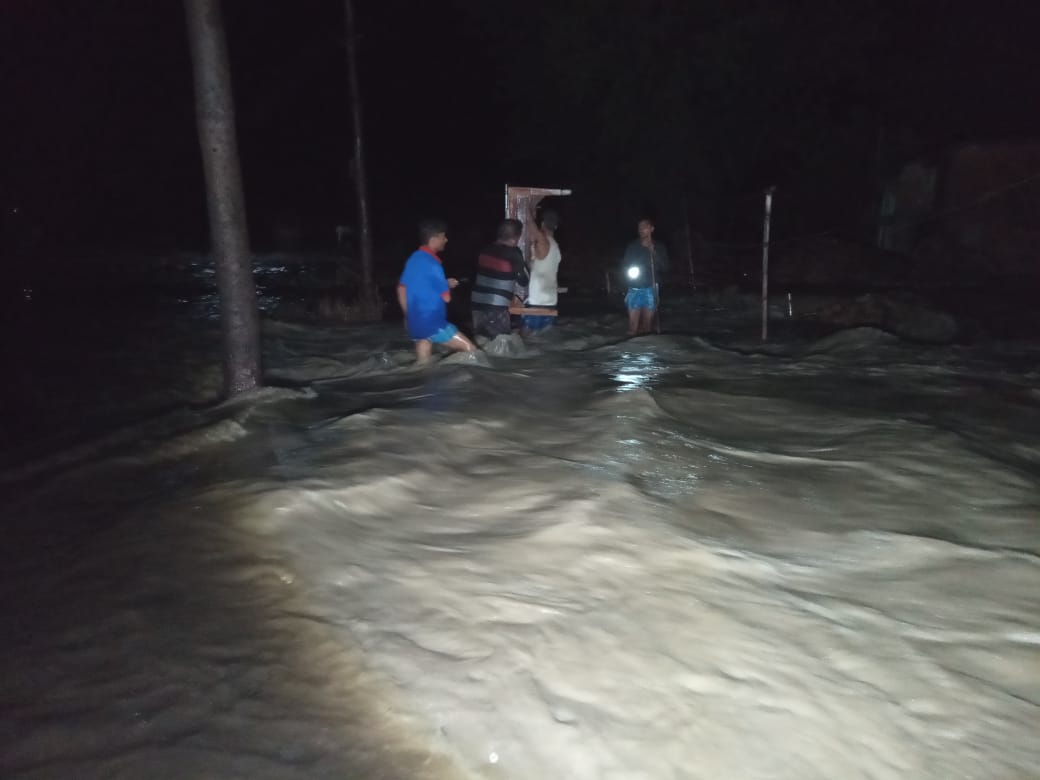
Meanwhile, Kundan Kumar, district collector of Pashchim Champaran, told Gaon Connection: “It was heavy rainfall; the situation is very normal. There were no flash floods as such, it was water logging.” He went on to inform that there was 156 millimetres (mm) rainfall. “Flood fighting teams, patrolling teams are there. Apart from that, two NDRF and one SDRF teams are working as well. We are monitoring the situation and are concerned about Gandak,” he added.
Villagers are still living in fear as the India Meteorological Department has issued a ‘warning’ and ‘alert’ for heavy rain, thunderstorm and lightning in Paschim Champaran, Purba Champaran, Siwan, Saran, Gopalganj districts of Bihar till June 21.
River #Gandak at #Dumariaghat in #GOPALGANJ dist and River #Burhi Gandak at #Chanpatia in #PASHCHIM CHAMPARAN dist of Bihar continues to flow in SEVERE
— Central Water Commission Official Flood Forecast (@CWCOfficial_FF) June 17, 2021
SITUATION with Rising trend @BsdmaBihar @ndmaindia @NDRFHQ @11Ndrf @ndrfpatna @MoJSDoWRRDGR pic.twitter.com/ALUyaReUEE
Yesterday June 16, Chief Minister Nitish Kumar called a meeting where he issued directives for the district magistrates of Purvi Champaran, Pashchim Champaran and Gopalganj to take the necessary measures to check floods and prevent any damage to dams and embankments along the banks of the Gandak.
नेपाल एवं गंडक नदी के जलग्रहण क्षेत्र में पिछले 24 घंटे से हो रही भारी वर्षापात के कारण नदी के जलस्तर में वृद्धि की संभावना को देखते हुये संबंधित विभाग एवं जिलों को पूरी तरह अलर्ट रहने का निदेश दिया है। https://t.co/eFFwPKW40I pic.twitter.com/KNLieh3HzS
— Nitish Kumar (@NitishKumar) June 15, 2021
Gaunaha block of Paschim Champaran, nearly 20 kilometres to the north east of Ramnagar, is also flood affected. “On June 14, it rained heavily and continued till June 15. Water remained in our homes for two days till it rained. Besides cooking food, sanitation also becomes a major problem in such times. We either wait for flood water to recede or defecate in the open,” Binita Kumari, a resident of Rupaliya village, told Gaon Connection.
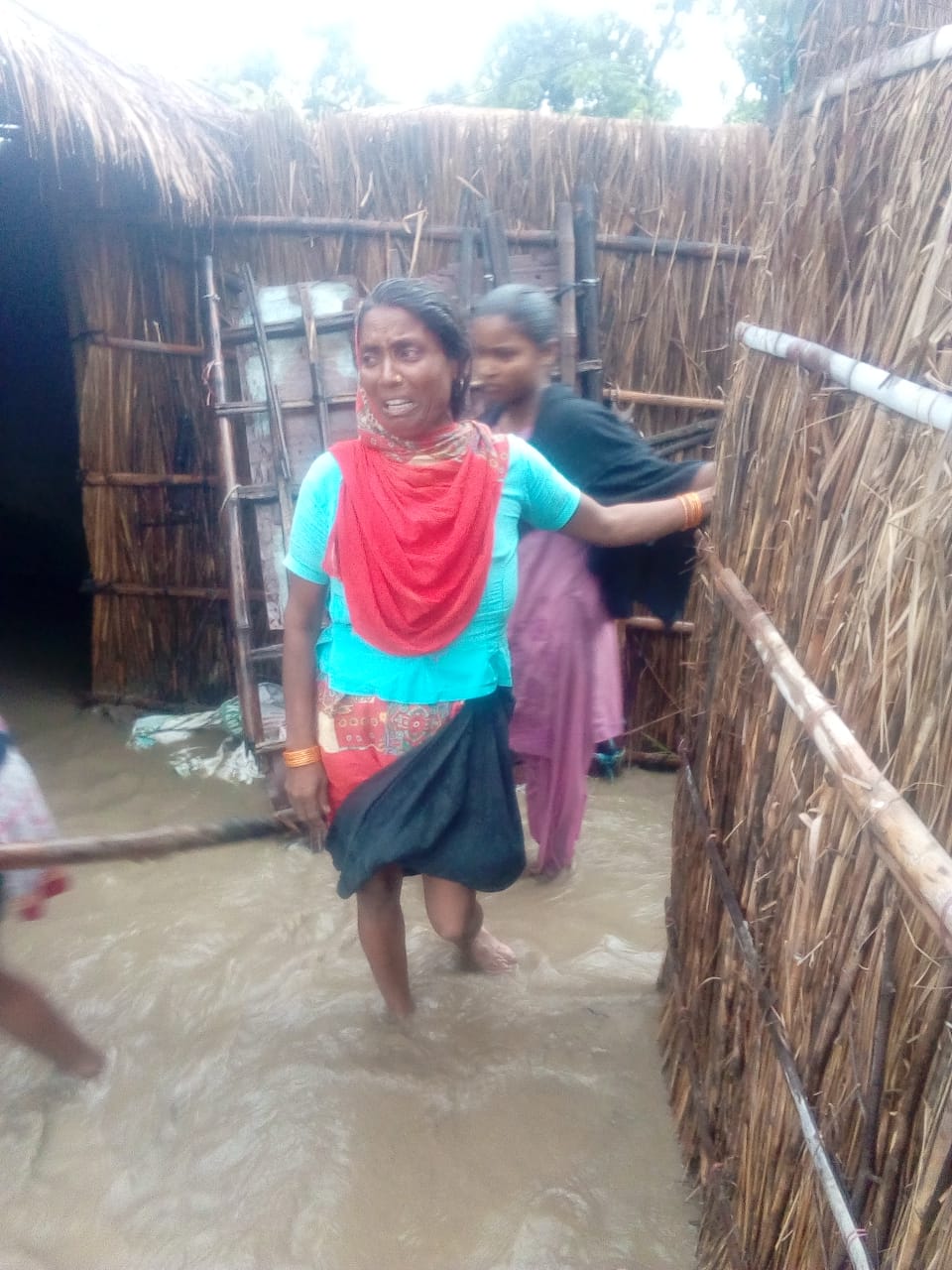
She informed that both the Chhegraha and Amawa rivers — small tributaries of Burhi Gandak river (another tributary of the Ganges) — were in full spate. “These small rivers that emerge from the forests in Nepal bring recurring flash floods to villages of the India-Nepal border,” rued Kumari. Her Rupaliya village is one such affected village.
Bihar is India’s most flood-prone state. And floods in Bihar are not caused due to heavy rainfall in the state alone. A number of Himalayan rivers from Nepal flow down into the flood-plains of north Bihar, making it India’s most flood-prone region. While the riverine floods are limited to the monsoon season, flash floods that affect the villages along the India-Nepal border occur throughout the year.
As per a comprehensive study by Megh Pyne Abhiyan, villages along the India-Nepal border in north Bihar face up to 66 flash floods a year. There are at least 148 small and seasonal transboundary rivers that flow into north Bihar from Nepal. These rivers, many of them seasonal, cause flash floods throughout the year causing recurring damages to the local people.
The recent flash floods have also been caused due to these small and seasonal transboundary rivers.
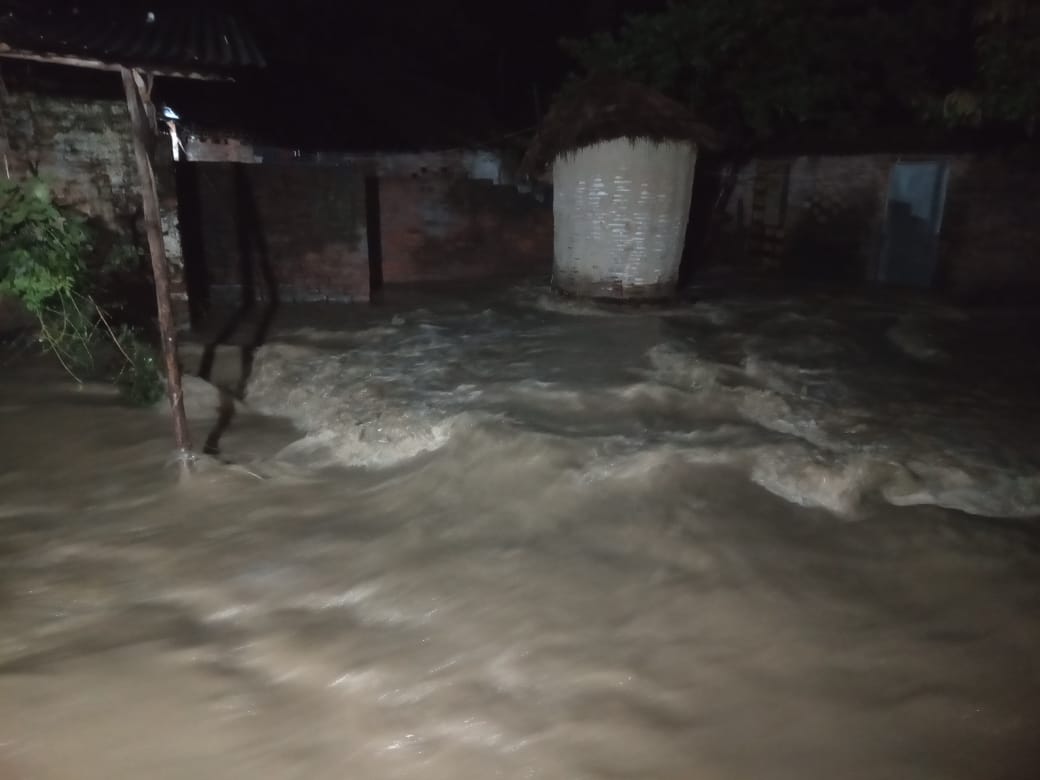
Explaining the context of flash floods along the India-Nepal border, Prasad of Megh Pyne Abhiyan, told Gaon Connection that as per the available information Paschim Champaran is encountering two types of floods.
“First is the riverine flood in Gandak and the other is flash flood caused by River Masan, a small and seasonal river. Masan is also a transboundary river. Whenever there is a downpour in the terai region of Nepal, owing to the geography of the region, the rain water flows towards the plains of Bihar. This is a natural phenomenon and should never be interpreted as Nepal leaving its water in Bihar (India),” he explained.
According to Prasad, the government has been neglecting the small, yet important, transboundary rivers such as Masan and notices them only during the monsoon.
Ujjawal Kumar raised similar concerns. “Floods in Gandak is front page news. Flash floods in Masan are not given much importance,” he said. According to him, these floods will continue all through the monsoon season till August and September months.
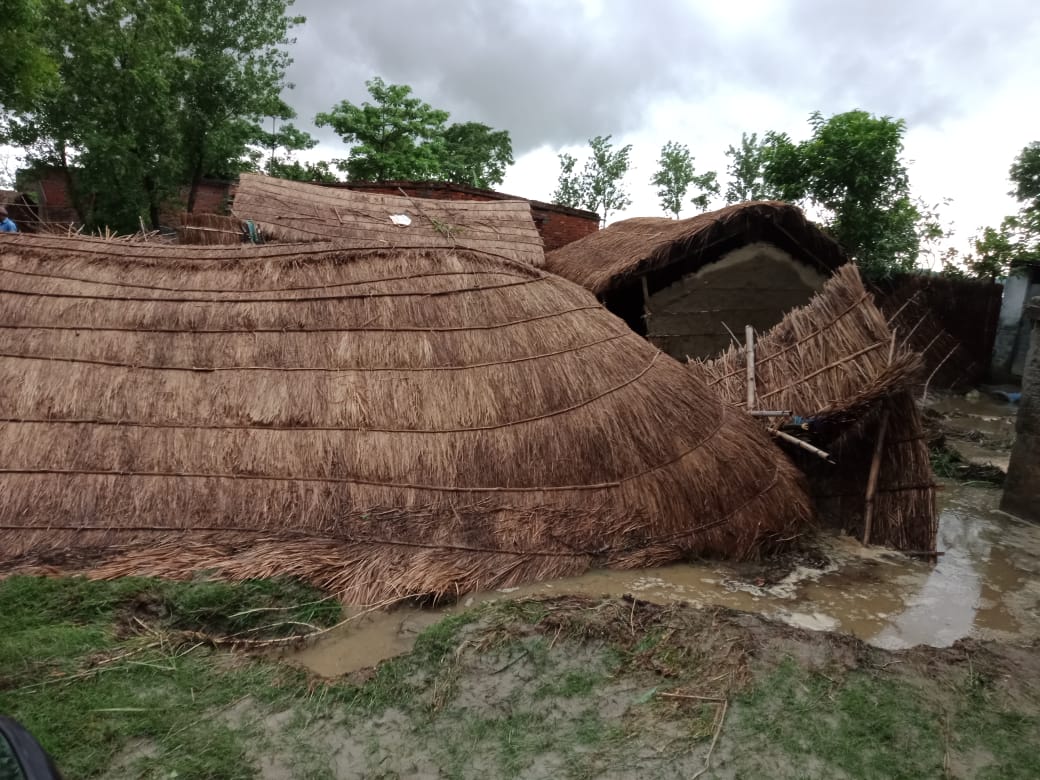
On May 4 this year, the Department of Disaster management, Bihar issued detailed guidelines for flood preparedness for the forthcoming monsoon at the district level. Next day, on May 5, the Bihar government issued a Flood Control Order framed by its Water Resources Department (WRD). Both guidelines have mentioned June 15 as the cut-off date for all pre-flood preparedness works in the flood-prone districts of the state. Guidelines of the disaster management department articulate measures to address the overlapping hazards.
“As per the flood control order 2021, all the preparedness including surveillance and repairing of the vulnerable points on the embankments has to be completed by June 15. However, we heard the news about both flash and riverine floods occurring in Pashchim Champaran district,” said Prasad.
He pointed out how all the flood related preparations are embankment centric and there is nothing specific regarding flash floods in the order. “What have they done to tackle flash floods? This is a life issue. We have innumerable small, seasonal trans-boundary rivers like Masan in the district,” said Prasad.
Small & seasonal trans-boundary rivers in #PashchimChamparan #Bihar
— Megh Pyne Abhiyan (@MeghPyneAbhiyan) June 17, 2021
Approximately 49 in numbers – Harbora, Bansi, Dwarda, Koshil (1/5)@officecmbihar @renu_bjp @SanjayJhaBihar @WRD_Bihar @sanjeev_hans97 @ias_kundan @IPRD_BETTIAH @veditum #BiharFloods2021
“The incidence of June 14/15 iterates that nothing has been done to address the issue of flash floods despite the fact that this form of flood is not restricted to the monsoon season, instead is a year-long phenomenon,” he added.
Local people including Kumar allege that there was no preparedness for flash floods beforehand. According to him, these floods do not even figure in the flood management narrative because as per the government guidelines, a region is declared flood affected only if it is water-logged for at least 48 hours with three feet deep water.
“In the case of flash floods along the India-Nepal border, the flood water gushes down, causes mayhem and drains away in four to five hours. If the government definition of floods is applied, we do not experience floods, even though the damage caused due to flash floods is more severe than the riverine floods,” said Kumar. “The government does not understand that if flash floods remain for forty eight hours, then pralay (catastrophe) will come in these villages,” he added.